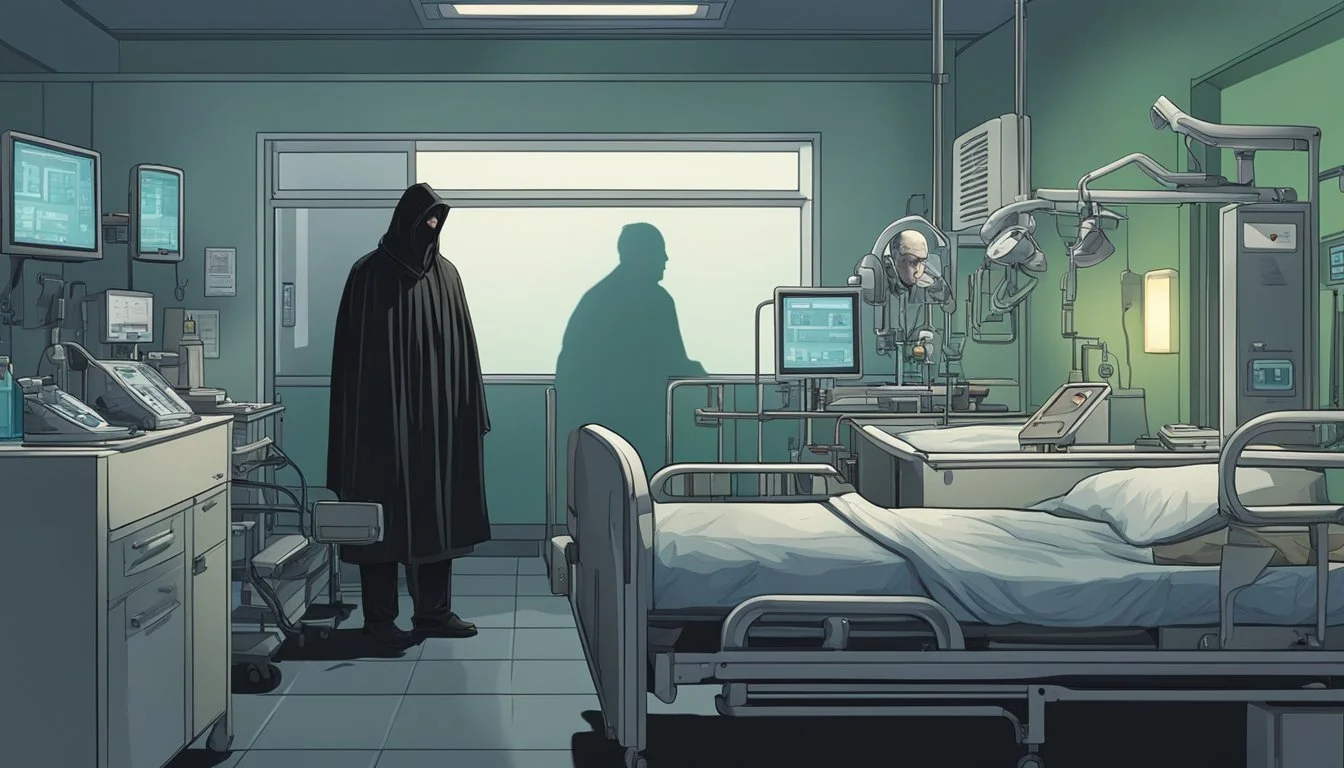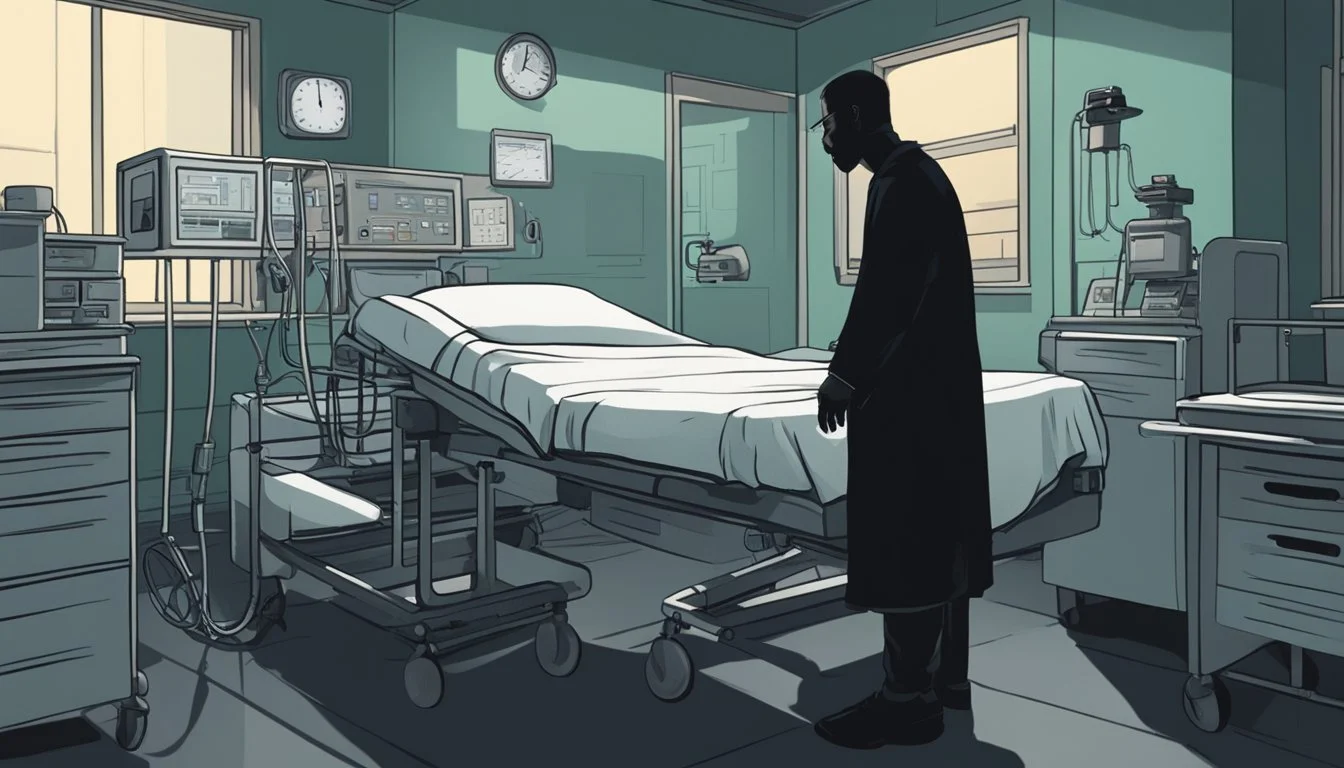Michael Swango: 5 Haunting Documentaries on Doctor Death
Exploring the Chilling Case of a Medical Serial Killer
Michael Swango, a former physician turned serial killer, has captivated public attention for decades. His chilling story of deception and murder within the medical profession has been the subject of numerous documentaries and true crime investigations.
These documentaries offer viewers a disturbing glimpse into the mind of a killer who used his position as a doctor to prey on vulnerable patients. From his early life to his eventual capture and conviction, the films explore how Swango managed to evade detection for so long while leaving a trail of victims across multiple continents.
1) Uncovering Evil: The Michael Swango Chronicles
The Michael Swango Chronicles is a chilling documentary that delves into the dark world of Dr. Michael Swango. This film meticulously traces Swango's career as a physician and his sinister activities across multiple healthcare facilities.
Through interviews with investigators, colleagues, and survivors, the documentary paints a disturbing picture of Swango's actions. It reveals how he repeatedly poisoned patients and coworkers, often evading detection due to his charm and medical credentials.
The film explores Swango's troubled past and the red flags that were overlooked by various institutions. It highlights the systemic failures that allowed him to continue practicing medicine despite suspicions of misconduct.
Viewers are taken on a journey through Swango's trail of destruction, from his early days as a medical student to his eventual capture and conviction. The documentary serves as a stark reminder of the potential for evil within trusted professions.
By shedding light on this harrowing case, The Michael Swango Chronicles aims to educate audiences about the importance of rigorous background checks and accountability in healthcare settings.
2) Doctor Death: A Medical Nightmare
"Doctor Death: A Medical Nightmare" is a chilling documentary that delves into the sinister actions of Michael Swango. The film explores how this seemingly accomplished physician managed to continue practicing medicine despite numerous red flags.
Swango's ability to manipulate the system and evade detection for years is a central focus of the documentary. It sheds light on the failures within medical institutions that allowed him to move from one hospital to another, leaving a trail of suspicious deaths in his wake.
The documentary features interviews with colleagues, patients' families, and law enforcement officials involved in the case. These firsthand accounts provide a haunting glimpse into Swango's calculated methods and the devastating impact of his actions.
Viewers are taken through the timeline of Swango's career, from his early days as a promising medical student to his eventual capture and conviction. The film raises important questions about patient safety and the need for more rigorous background checks in the medical profession.
"Doctor Death: A Medical Nightmare" serves as a stark reminder of the potential dangers when trust in medical professionals is betrayed. It highlights the importance of vigilance and accountability in healthcare systems.
3) The True Story of Dr. Michael Swango
Michael Swango was born in 1954 in Tacoma, Washington. He grew up in Quincy, Illinois, where he was considered academically gifted by his mother.
Swango pursued a medical career, graduating from Southern Illinois University School of Medicine. During his time as a medical student and resident, patients under his care began experiencing unexplained illnesses and deaths.
Despite suspicions, Swango managed to continue practicing medicine at various hospitals across the United States. He used his position to poison patients, colleagues, and even his girlfriend.
Swango's crimes spanned several states and even extended internationally. He is believed to have killed up to 60 people, though the exact number remains unknown.
In 2000, Swango pleaded guilty to murder charges in New York and Ohio. He received three life sentences without the possibility of parole for his heinous acts.
The case of Michael Swango exposed significant flaws in the medical credentialing system, prompting reforms to prevent similar situations in the future.
4) Haunting Evidence: Michael Swango's Dark Side
Michael Swango's sinister actions are chronicled in several documentaries that expose his dark side. These films provide chilling insights into the mind of a doctor who violated his oath to heal.
One documentary delves into Swango's troubled childhood and early signs of disturbing behavior. It explores how he managed to manipulate the medical system and continue practicing despite suspicions.
Another film focuses on Swango's methods of poisoning patients. It presents forensic evidence and expert analysis of the substances he used to carry out his crimes undetected for years.
A third documentary examines the trail of mysterious deaths that followed Swango across multiple hospitals. It features interviews with colleagues who noticed unusual patterns in patient mortality rates during his shifts.
These documentaries paint a haunting picture of a seemingly respectable doctor hiding a murderous obsession. They reveal how Swango's charm and intelligence allowed him to evade suspicion and continue his killing spree for over a decade.
5) Deadly Medicine: The Michael Swango Case
This documentary aired on A&E's American Justice series in 2003. It provides a comprehensive look at Michael Swango's criminal career and the failures of the medical system that allowed him to continue practicing.
The film features interviews with investigators, victims' families, and medical professionals who encountered Swango. It examines how he was able to move between hospitals despite suspicions about his conduct.
Deadly Medicine explores Swango's troubled background and his fascination with death from a young age. It traces his path through medical school and residency programs where patients mysteriously died under his care.
The documentary highlights the challenges prosecutors faced in building a case against Swango. It details the evidence that eventually led to his conviction for multiple murders.
Viewers gain insight into Swango's manipulative personality and how he exploited weaknesses in hospital hiring practices. The film serves as a chilling warning about the potential for abuse within the medical profession.
https://www.imdb.com/title/tt0481944/
Background of Michael Swango
Michael Joseph Swango was an American physician and convicted serial killer who poisoned numerous patients and colleagues over several decades. His criminal activities spanned multiple states and countries, leaving a trail of suspicious deaths in his wake.
Early Life and Education
Born on October 21, 1954, in Tacoma, Washington, Michael Swango grew up in Quincy, Illinois. He excelled academically and served as a Marine Corps medic before attending medical school.
Swango enrolled at Southern Illinois University School of Medicine in 1979. During his time there, he developed an unusual fascination with dying patients, often volunteering for extra time in the emergency room.
His behavior raised concerns among classmates and faculty. Despite these red flags, Swango graduated in 1983 and began his internship at Ohio State University Medical Center.
Medical Career
Swango's medical career was marked by frequent job changes and suspicious incidents. He started his internship at Ohio State University in 1983 but was dismissed after patients in his care experienced unexplained health issues.
He then worked briefly as an emergency medical technician in Illinois before securing positions at various hospitals across the United States. Swango often used forged credentials to obtain these jobs.
His employment history included stints in South Dakota, New York, and even Zimbabwe. At each location, patients under his care mysteriously fell ill or died unexpectedly.
Criminal Activities
Swango's criminal activities primarily involved poisoning patients and colleagues. He is estimated to have been involved in as many as 60 fatal poisonings, although he only admitted to causing four deaths.
His methods typically included adding toxic substances to food, drinks, or intravenous fluids. Swango's victims experienced symptoms such as nausea, dizziness, and cardiac arrest.
In 1985, he was convicted of aggravated battery for poisoning co-workers and served two years in prison. After his release, he continued to practice medicine using false credentials.
Swango was finally arrested in 1997 and pleaded guilty to murder charges in 2000. He is currently serving three consecutive life terms without the possibility of parole.
Documentary Filmmaking Techniques
Documentary filmmakers employ various methods to bring true stories to life. These techniques help capture the essence of real events and people, creating compelling narratives for viewers.
Interview Methods
Interviews form a crucial part of documentary storytelling. Filmmakers often use one-on-one sit-down interviews with key figures related to the subject. This allows for in-depth exploration of personal experiences and perspectives.
Experts and witnesses may be interviewed to provide context and analysis. Some documentaries utilize group interviews or panel discussions to showcase multiple viewpoints simultaneously.
Techniques like the "talking head" shot, where the interviewee speaks directly to the camera, are common. Filmmakers may also employ more dynamic approaches, such as walking interviews or conversations in meaningful locations.
Use of Archival Footage
Archival footage adds authenticity and historical context to documentaries. Filmmakers source old news reports, home videos, and photographs to illustrate past events.
This material can transport viewers to specific time periods and locations. It often serves as visual evidence, supporting claims made in the narrative.
Documentarians may creatively incorporate archival elements, such as overlaying old footage with modern interviews. They might also use split-screen techniques to compare past and present visuals.
Dramatization and Reenactment
When direct footage is unavailable, filmmakers turn to dramatizations and reenactments. These staged scenes help visualize events that were not captured on camera.
Actors may portray key figures, recreating important moments or conversations. Reenactments can range from highly stylized to realistic depictions.
Some documentaries use partial reenactments, showing only hands or silhouettes to maintain a sense of mystery. Others blend dramatized scenes seamlessly with real footage.
Filmmakers must balance the need for visual storytelling with maintaining factual accuracy in these recreations. Clear labeling of reenacted scenes is essential for transparency.





